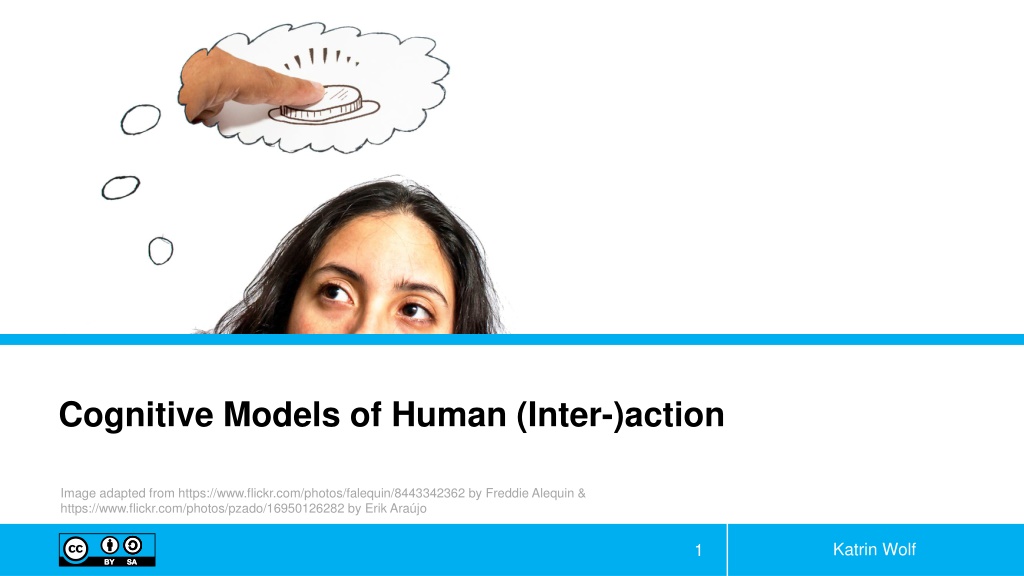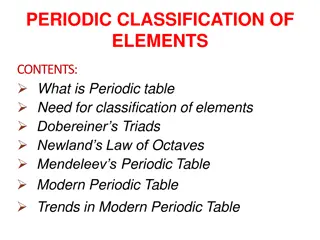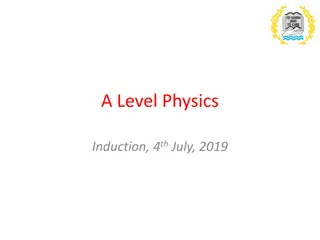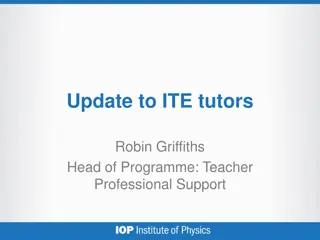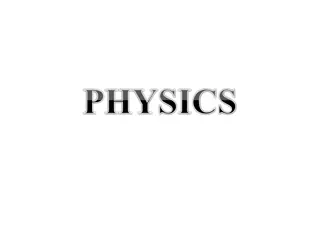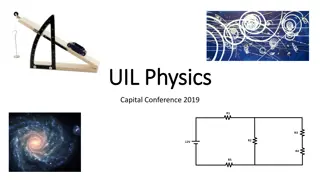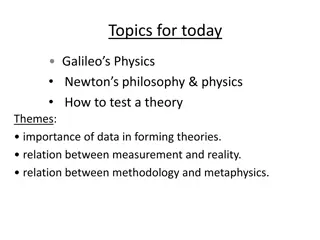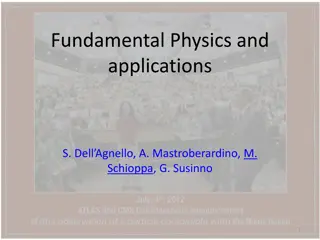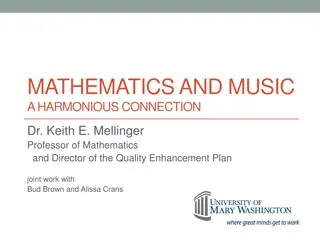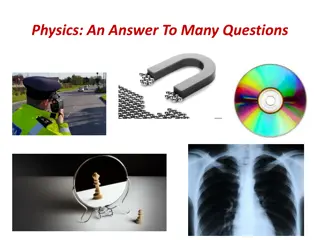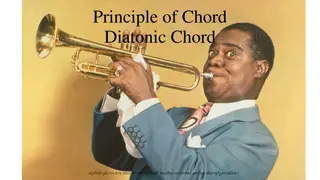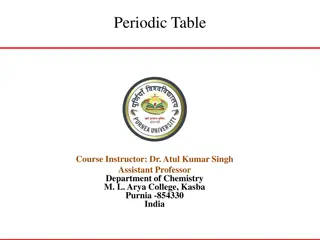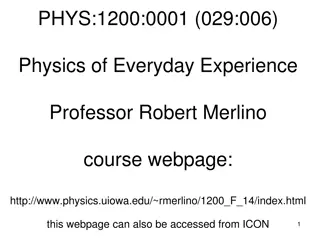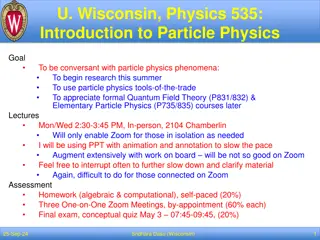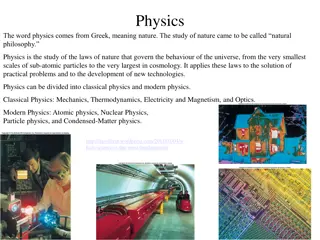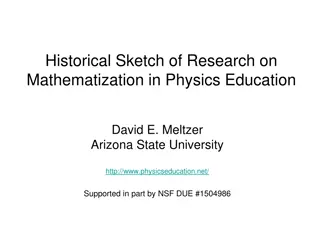Triads, Enneads, and Modern Physics
Dive into the fascinating connection between Triads to Enneads, exploring the concepts of Love, Wisdom, and Use in relation to spiritual and natural realms. Discover how these ideas relate to modern physics and the patterns of influx according to Swedenborg's teachings.
Uploaded on Mar 04, 2025 | 0 Views
Download Presentation

Please find below an Image/Link to download the presentation.
The content on the website is provided AS IS for your information and personal use only. It may not be sold, licensed, or shared on other websites without obtaining consent from the author.If you encounter any issues during the download, it is possible that the publisher has removed the file from their server.
You are allowed to download the files provided on this website for personal or commercial use, subject to the condition that they are used lawfully. All files are the property of their respective owners.
The content on the website is provided AS IS for your information and personal use only. It may not be sold, licensed, or shared on other websites without obtaining consent from the author.
E N D
Presentation Transcript
Cognitive Models of Human (Inter-)action Image adapted from https://www.flickr.com/photos/falequin/8443342362 by Freddie Alequin & https://www.flickr.com/photos/pzado/16950126282 by Erik Ara jo Katrin Wolf 1
Learning Goals Model Human Processor Multiple Resource Theory Attention Katrin Wolf 2
Model Human Processor Very simple model of a human interacting with a computer The model describes the human as three sub-systems Perceptual system (input: from the real world) Motor system (output: manipulate the real world) Cognitive system (connection between input and output, basic processing and memory) Card, S.K; Moran, T. P; and Newell, A. The Model Human Processor: An Engineering Model of Human Performance. In K. R. Boff, L. Kaufman, & J. P. Thomas (Eds.), Handbook of Perception and Human Performance. Vol. 2: Cognitive Processes and Performance, 1986, pages 1 35. Attention Katrin Wolf 3
Model Human Processor Long Term Memory Memory Visual Store Auditory Store Working Memory Perceptual Processor Cognitive Processor Motor Processor Processor Input/ Output Arms, wrists, fingers, etc. Eyes Ears Image from Brian P. Bailey, Computer Science 498bpb, Psychology of HCI http://www-faculty.cs.uiuc.edu/~bpbailey/teaching/2004-Fall/cs498/ Attention Katrin Wolf 4
Model Human Processor Image http://en.wikipedia.org/wiki/Human_processor_model Attention Katrin Wolf 5
Model Human Processor Reaction/processing time, example: Perception (stimulus); typical time: TP ~ 100ms Simple decision; typical time: TC ~ 70ms Minimal motion; typical time: TM ~ 70ms (example for complex motor action see Fitts law, KLM) Overall time for operation where there is a sequential processing pressing a button when a light comes on is about 240ms T = TP + TC + TM Matching a symbol and then pressing one of two buttons is about 310ms (2TC because there is comparison and decision) T = TP + 2TC + TM Processing can also be parallel (e.g. phoning while writing, talking while driving, ) Attention Katrin Wolf 6
Limitations of a "single-resource" theory of attention Image Source https://upload.wikimedia.org/wikipedia/commons/c/c8/Multitasking_%281272935961%29.jpg by Lisa Cyr Attention Katrin Wolf 8
Multiple Resource Theory Instead of one pool of resources, there are several different capacities of resources: Modalities: visual or auditory Information type: spatial or verbal Responses: manual, spatial, vocal, verbal Stages of processing: early (perception/cognition) or late (responding) Tasks using same resources interfere each other Tasks using different resources can be done simultaneously Wickens, C. D.: Multiple resources and performance prediction. Theoretical Issues in Ergonomics Science. S.159 177, 2002. Attention Katrin Wolf 9
Multiple Resource Theory Driving straight & talking do not interfere: Driving (eye-hand): processing of spatial information Conversation (ear- cognition-mouth): verbal information Image: Wickens, C. D.: Multiple resources and performance prediction. Theoretical Issues in Ergonomics Science. S.159 177, 2002. & https://www.piqsels.com/en/public-domain-photo-jjmiz Attention Katrin Wolf 10
Multiple Resource Theory Conversation (ears- cognition-mouth) and using the navigation assistant (ears-hand) interfere Image: Wickens, C. D.: Multiple resources and performance prediction. Theoretical Issues in Ergonomics Science. S.159 177, 2002. & https://www.piqsels.com/en/public-domain-photo-jjmiz Attention Katrin Wolf 11
Multiple Resource Theory Deep conversation (ears-cognition- mouth) and complex driving maneuver, e.g. lane changes (eyes- cognition-hand) interfere Image: Wickens, C. D.: Multiple resources and performance prediction. Theoretical Issues in Ergonomics Science. S.159 177, 2002. & https://www.piqsels.com/en/public-domain-photo-jjmiz Attention Katrin Wolf 12
Multiple Resource Theory Image: Wickens, C. D.: Multiple resources and performance prediction. Theoretical Issues in Ergonomics Science. S.159 177, 2002. & https://www.piqsels.com/en/public-domain-photo-jjmiz Attention Katrin Wolf 13
Multiple Resource Theory Image: Wickens, C. D.: Multiple resources and performance prediction. Theoretical Issues in Ergonomics Science. S.159 177, 2002. & https://pxhere.com/en/photo/796351 Attention Katrin Wolf 14
This file is licensed under the Creative Commons Attribution-Share Alike 4.0 (CC BY-SA) license: https://creativecommons.org/licenses/by-sa/4.0 Attribution: Katrin Wolf For more content see: https://hci-lecture.de Katrin Wolf
